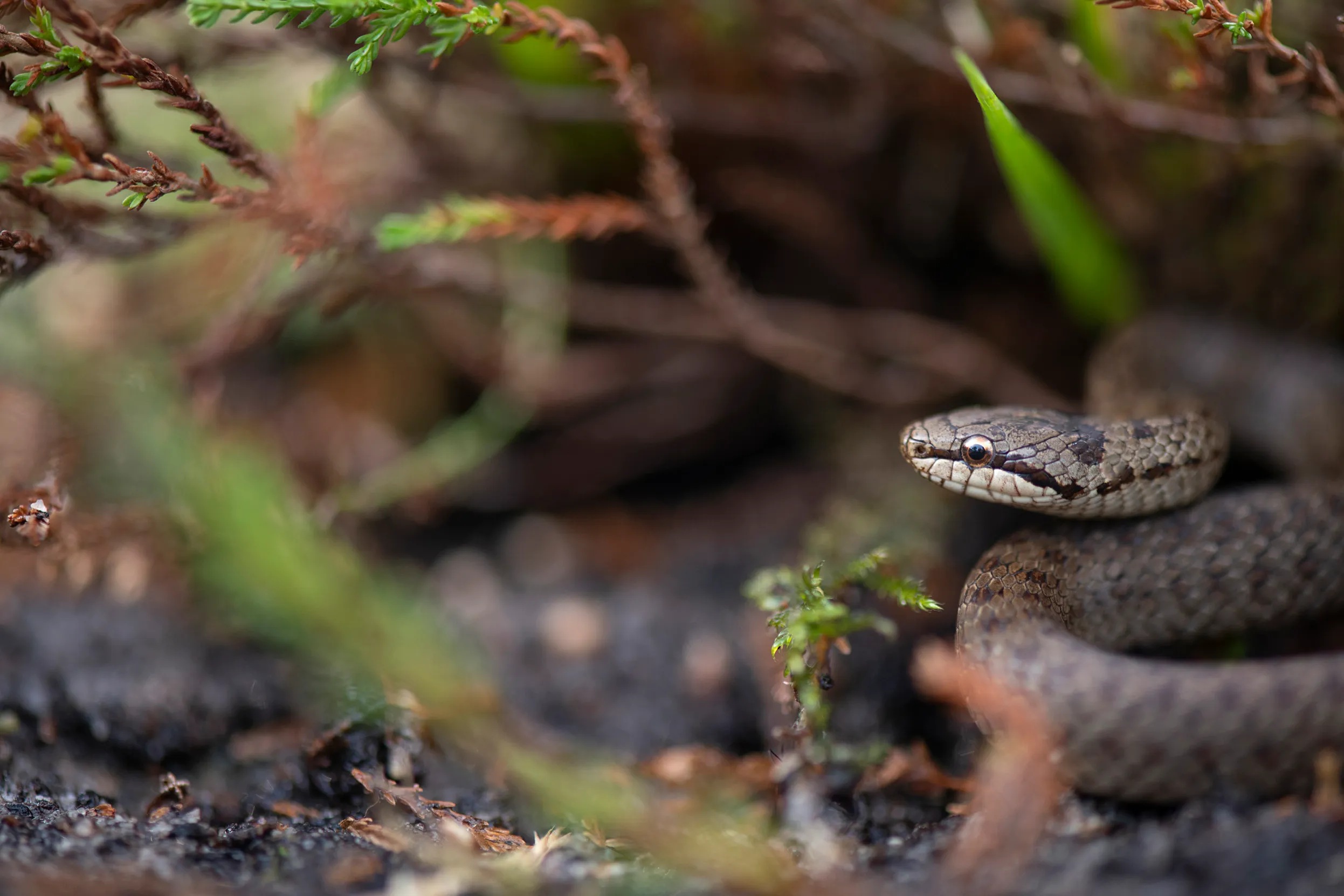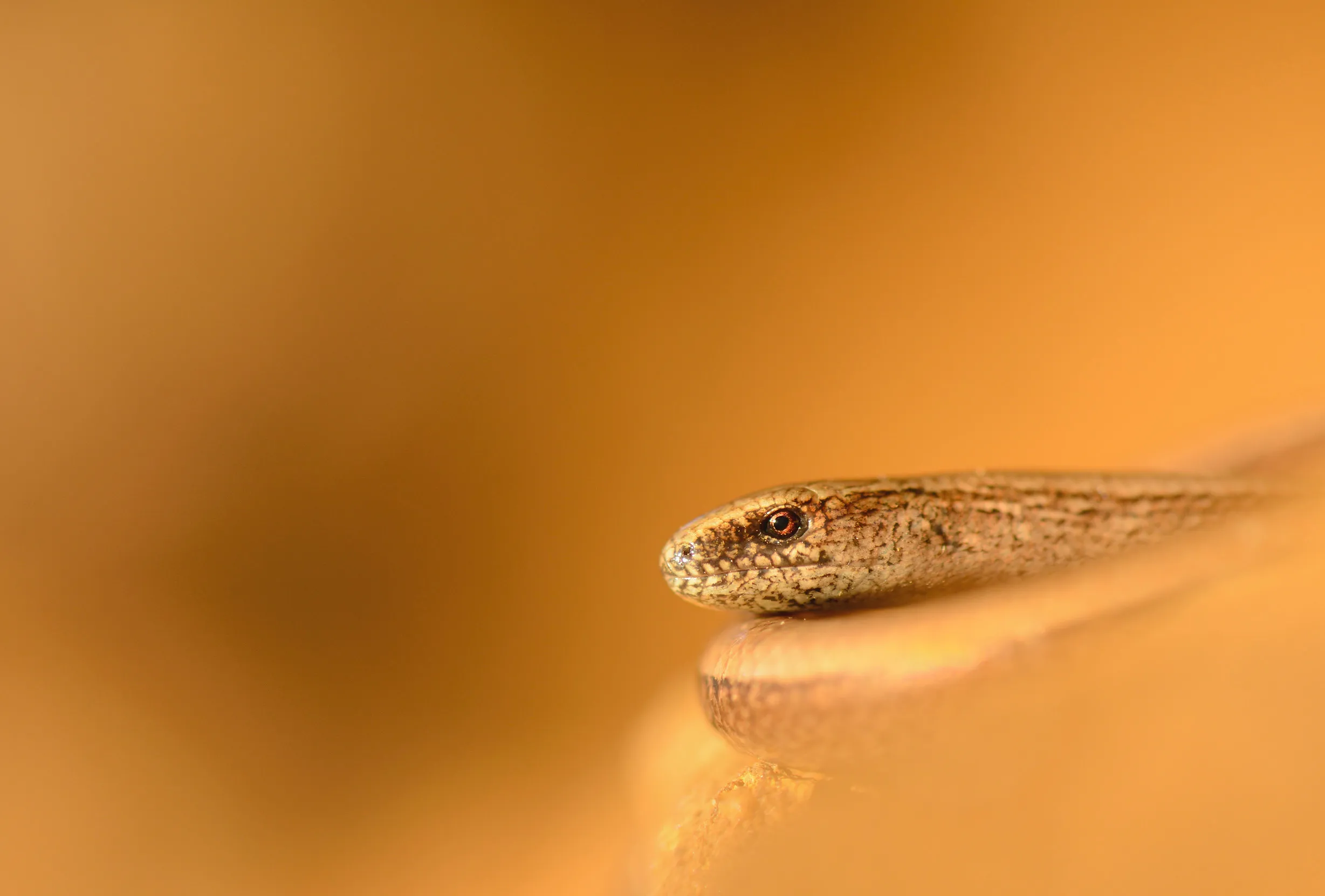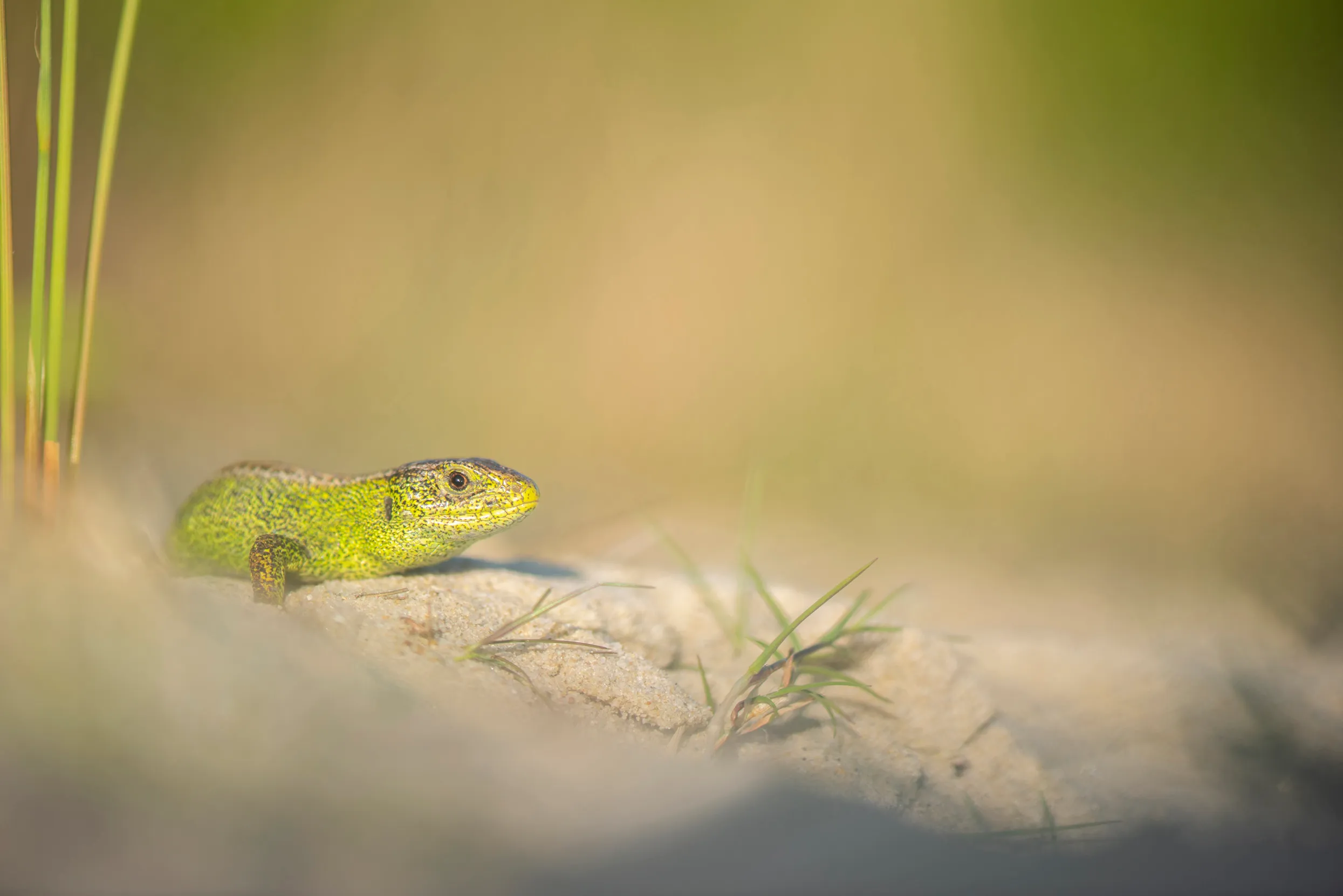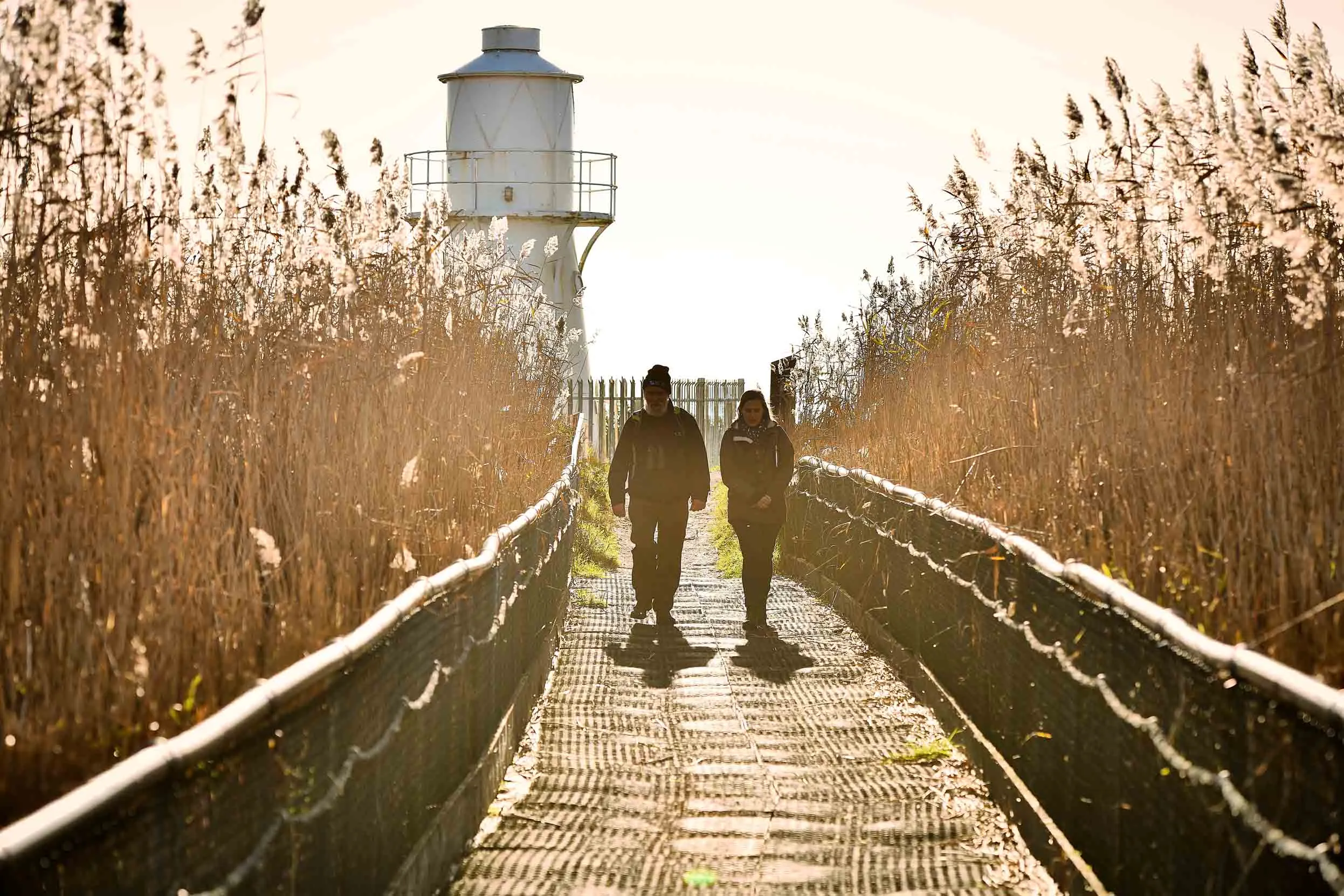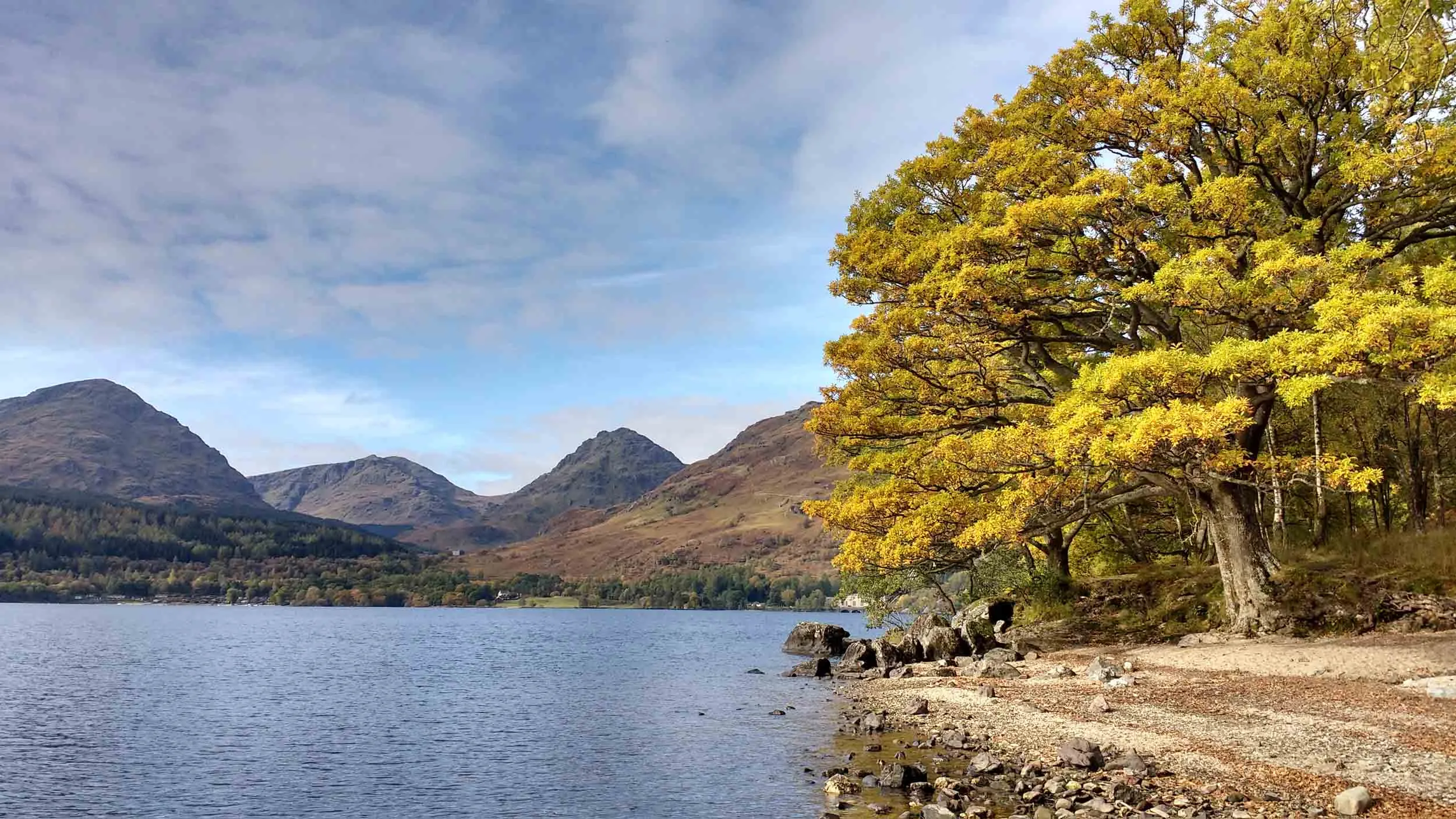If you decide to go in search of our wonderful reptiles this summer, please note that they are protected by law and should not be disturbed in any way. Always stick to footpaths and keep dogs on leads at all times.
Advice
Six reptiles found in the UK and where you can see them
The UK is home to six native reptile species. Discover where to find these snakes and lizards.

On this page
From venomous Adders to basking lizards, our shores host species you might associate with warmer or wilder places. Some of the UK’s reptiles are very rare – but some are common enough that they can be found in your compost pile!
In this guide, we’re sharing our top tips to tick five of them off your spotting list. We’ll also introduce you to the UK’s rarest terrestrial reptile – the Smooth Snake – a species which has faced dramatic declines.
Remember!
UK snake species
Grass Snake
What do Grass Snakes look like?
- Olive-green
- Distinct dark spots on their upperparts
- Black and yellow collar
- This is our largest snake, with some females reaching over a metre in length
Are Grass Snakes venomous?
No.
Where to find Grass Snakes in the UK
Grass Snakes can be found across much of mainland England and Wales with a small number occurring in southwest Scotland.
Adder
What do Adders look like?
- Variable in colour, males tend to be a silver-grey while females are a warm brown
- Defined black zigzag pattern on its upperparts
- Striking red eyes
- Between 60-80cm in length
In spring, look out for the males performing elaborate wrestling 'dances' as they fend off rivals.
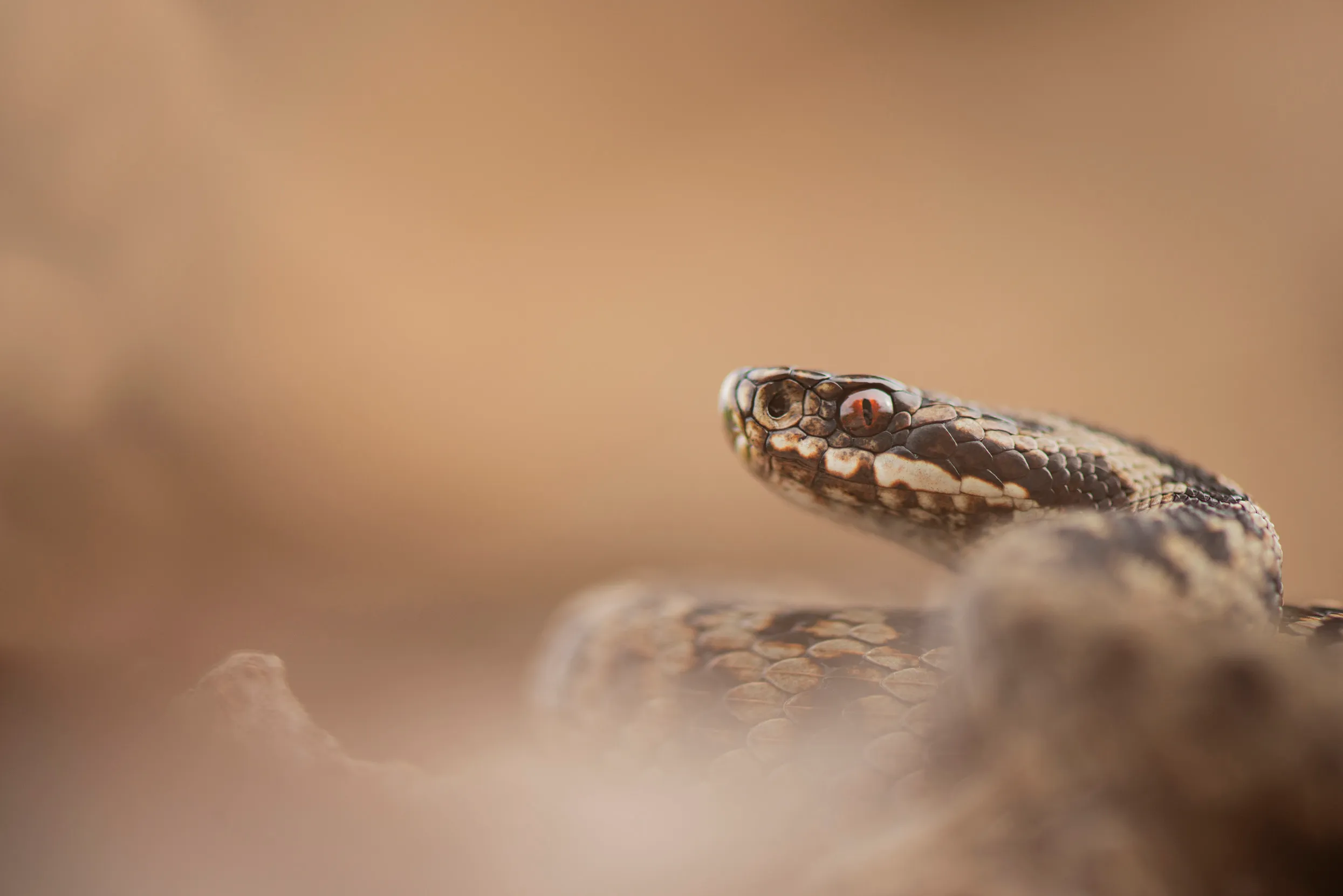
Top tip:
Adders and Smooth Snakes look quite similar. An Adder’s back pattern is more distinct, while a Smooth Snake’s eyes are hazel, with a round pupil.
Are Adders venomous?
Although quite small, this is the UK's only venomous snake species. Its venom is mainly used for subduing its prey and bites to humans are uncommon but do be sure to keep a respectful distance! If you accidentally disturb this timid beauty and get bitten, you will need to seek medical treatment.

Did you know?
Despite the words sometimes being used interchangeably, there is a difference between ‘poisonous’ and ‘venomous’. And it’s all about how a species dispatches its defenses.
Poisonous: Toxins are passed to others through consuming, inhaling or touching.
Venomous: Toxins are passed to others through a bite or sting.
Where to find Adders in the UK
The Adder can be found as far north as the top of mainland Scotland. This animal generally keeps a low profile. The best way to spot one is by scouting out south facing areas in early to mid-spring and scanning for a basking snake. At this time of year, they’ll soak up as much sun as possible, after emerging from a long winter hibernation.

Top tip:
When watching a basking reptile, don’t let your shadow fall across the animal. This can make them retreat back to cover!
Smooth Snake
What do Smooth Snakes look like?
- Slender
- Mottled pattern on the back
- Variable colour – usually grey or brown
- Between 50-70cm in length
Are Smooth Snakes venomous?
No.
Where to find Smooth Snakes in the UK
These snakes are both shy and incredibly scarce. They’re heathland specialists, but their habitats were historically repurposed at scale for commercial forestry and development.
Now, Smooth Snakes are found only in isolated pockets of Dorset, Devon, Hampshire, Surrey and West Sussex, and are highly dependent on nature reserves and managed sites like at RSPB Arne.
UK lizard species
Slow Worm
What do Slow Worms look like?
- Reaching around 50cm, they’re small in comparison to snakes
- A metallic bronze sheen to their skin
- Females sport dark stripes along the body, while mature males can also show lines of fine blue spots
Although often mistaken for a snake, the wildly inaccurately named Slow Worm is actually a legless lizard.
Where to find Slow Worms in the UK
They have a rather patchy distribution but can be found in many parts of England, Wales and Scotland, though along with all species of snake are absent from Northern Ireland. They may be encountered on heathlands, moorlands, grassy woodland edges and they love compost heaps in gardens.
Common Lizard
What do Common Lizards look like?
- Around 10 - 16cm
- Covered in scales, making them easy to separate from Common Newts which have smooth skin
- Highly variable in colour

Did you know?
The Common Lizard is also known as the Viviparous Lizard – the word viviparous meaning that it gives birth to live young, having incubated the eggs inside the body!
Where to find Common Lizards in the UK
The Common Lizard is the most widespread and numerous of all our wild reptiles. It is the only native reptile to be found in Northern Ireland. This small lizard may be found in a wide range of habitats including sea cliffs, moorlands, grasslands, woodlands, crags and around dry-stone walls.
Find out where you can spot Common Lizards at an RSPB reserve
Sand Lizard
What do Sand Lizards look like?
- Larger than the Common Lizard, at around 20cm
- Generally brown in colour though the males adopt dazzling bright green face, flanks and legs in the breeding season
Did you know?
Like other lizards it can shed its still-wriggling tail to distract predators, while it makes its escape. It will regrow the tail, though this replacement is often shorter and somewhat stumpier.
Where to find Sand Lizards in the UK
Barely commoner than the super-rare Smooth Snake, our final reptile is also a severely threatened species. Sand Lizards can only be found at a few heathland and coastal sand dune sites in England. Along with restoring and protecting the few remaining sites where Sand Lizards still occur, introductions have also taken place at several suitable locations in an effort to increase the overall UK population.
Where to find our native UK reptiles
England
Arne, Dorset
- Famously, this large reserve provides a haven for all six of our native reptile species, as well as lots of other amazing wildlife.
Minsmere, Suffolk
- A great place to look for Adders, Grass Snakes, Slow Worms and Common Lizards on warm, sunny days.
Geltsdale, Cumbria
- Along with Black Grouse and birds of prey, this glorious upland site is also home to reptiles including Slow Worms and Adders.
Wales
South Stack, Anglesey
- Look out for Common Lizards, Adders and Slow Worms at this spectacular coastal reserve.
Newport Wetlands, Gwent
- Summer days are perfect for spotting basking Grass Snakes at this fine wetland site.
Scotland
Forsinard Flows, Highland
- Watch for Common Lizards and Adders from the boardwalk over the plant-rich blanket bog.
Loch Lomond, West Dunbartonshire
- The loch-side pathways meander through a range of habitats which provide homes to lots of wildlife including Slow Worms, Common Lizards and Adders.
Northern Ireland
Aghatirouke, County Fermanagh
- Part of the Cuilcagh Mountain World Geopark, this large expanse of remote blanket bog is a haven for raptors as well as providing a refuge for Common Lizards.
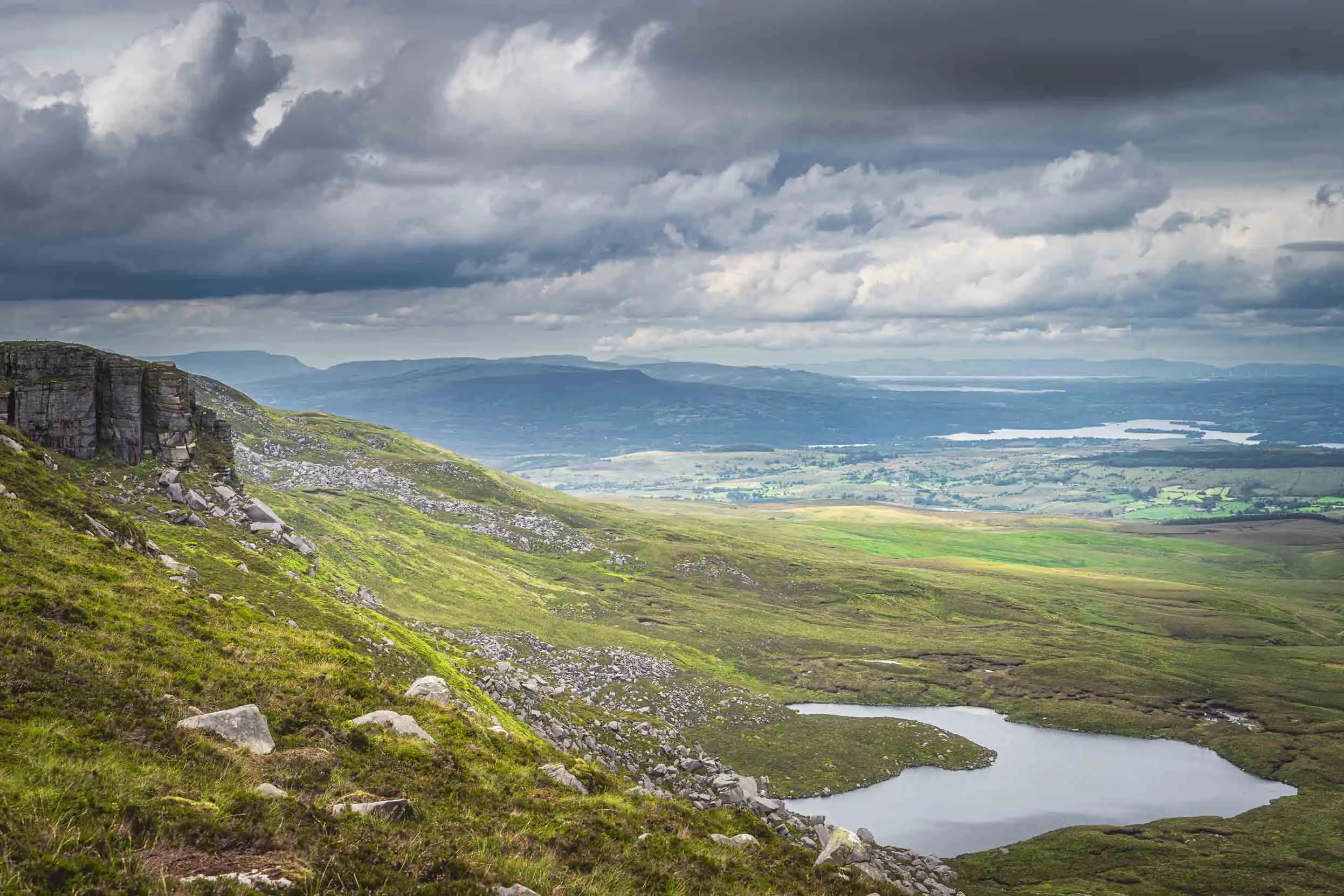
How to attract reptiles to your garden
Discover our guides to creating a compost heap, digging a pond or building a Slow Worm sanctuary in your garden.









